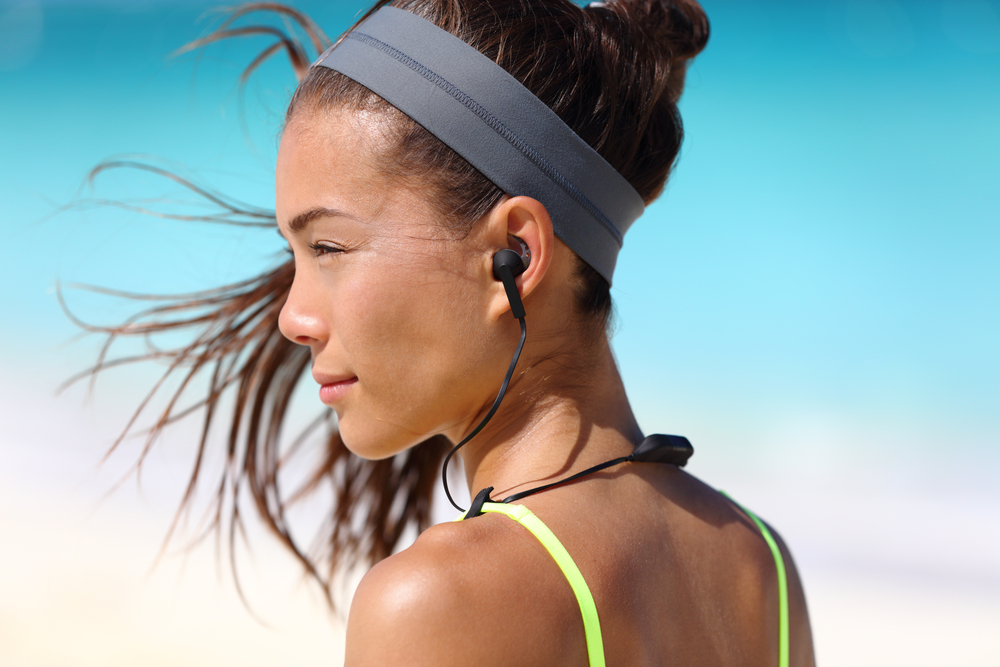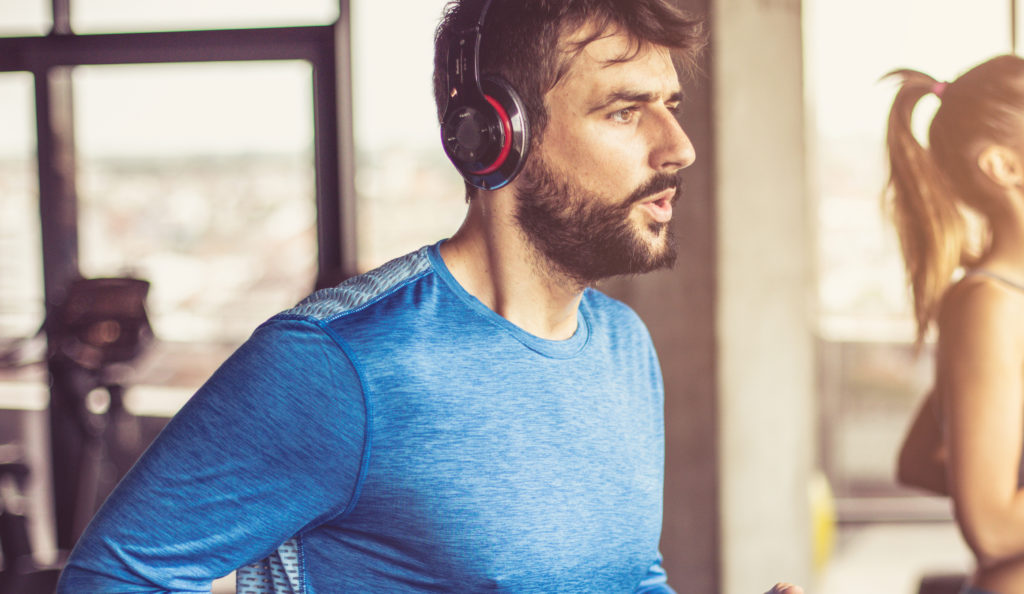There are a TON of different headphone options on the market, and it can be incredibly tough when deciding which headphone is best for your needs. In this article, we’re going to highlight four different types of headphones one can use to work out with and assess their pros and cons when wearing them for various types of lifts.
The four different types of headphones we’ll discuss are:
- In-ear headphones
- Earbuds headphones
- On-ear headphones
- Over-ear headphones
Author’s Note: Within each headphone category discussed it’s important to remember that quality, price, and functionality will differ pretty drastically between various pairs on the market.
For this article, we’re going to objectively discuss headphones from a broad point of view and discuss their best functionalities when it comes to working out specifically.
Four Types of Headphones
1. In-Ear Headphones
In-ear headphones are exactly what you think about when you think of your standard corded headphone: they sit in your ear. In-ear headphones come in many shapes and sizes, and no two designs are exactly alike, but they all have one trait in common and that is the in-ear canal bud construction.
These headphones will typically have rubber inserts (or sometimes foam) on the ear end of them and insert directly into the ear canal. In-ear headphones come in both corded and wireless options.
2. Earbuds
Earbuds, while very similar to in-ear headphones, have a slight difference in the fact that they rely on the bud placement staying in the ear due to the concha ridge at the center of the outer ear. They’re actually not designed to go within the ear canal and rarely have rubber or foam padding. A good example is the ubiquitous white Apple Earpods. These headphones come in many shapes and sizes and have both corded and wireless options.
3. On-Ear Headphones
On-ear headphones are exactly as their name suggests, headphones that fall on top of the ears. These headphones will have a band that falls over the top of the head with bigger earphones that don’t always fully cover the ear. Note that these headphones can cover some ears entirely, but unless they have over-ear concave specificity, then they fall in the on-ear category.
4. Over-Ear Headphones
Over-ear headphones have the intention of covering the full ear to provide quality sound. Typically, these headphones will also be deemed as “noise canceling”, as they’re great for blocking external noises to provide you with the utmost sound quality.
Corded Or Wireless Headphones?
What’s Best for Working Out?
When it comes to finding a pair of headphones for working out, few occasions will truly allow for a corded headphone to excel in the gym. In fact, there are only a few situations when corded headphones are useful when in the gym including,
- Light recreational lifting with machines, light dumbbell work and light barbell work.
- Lighter cardio training on the StairMaster or treadmill.
Outside of the above two situations, corded headphones don’t really have a place in the gym.
Cords can get in the way of movements and keeping a phone on you at all times isn’t truly optimal when working at higher intensities.
Go Cordless for Workouts
In reality, if you need a pair of headphones for the gym, then you should opt for cordless pairs that have a decent Bluetooth connection. For the sake of argument, when we discuss the PROS and CONS below they will be in reference to the four types of headphones discussed and their wireless options.
At BarBend, we test headphones in cross-training, powerlifting, and plyometric workouts, all which are all non-conducive to corded pairs of headphones.
In-Ear Headphones for Working Out
In-Ear Pros
- Typically have lighter construction and builds.
- Easily transportable.
- Plenty of cost effective options.
- Pretty great at staying in the ear during various activities.
- Wide range of different types of designs for various needs and wants.

In-Ear Cons
- Can breakdown a little more quickly depending on their construction.
- Easy to lose in gym bags.
- More prone to connectivity issues than on-ear and over-ear varieties.
- Uncomfortable for some users with sensitive ears.
Earbuds for Working Out
Earbud Pros
- Easily transportable and lightweight.
- Multiple cost efficient options.

Earbud Cons
- Can fall out more easily when doing dynamic, jumping workouts.
- More prone to connectivity issues than on-ear and over-ear varieties.
On-Ear Headphones for Working Out
On-Ear Headphone Pros
- Pretty good connectivity across the board (for most models).
- Can be very loud and typically have decent sound quality.
- Usually durable and sturdy on the head for most workouts.

On-Ear Headphone Cons
- Can be pricey at times.
- Not always designed specifically for working out.
- Not ideal for jumps and long duration run focused workouts.
- Can be uncomfortable for some sized heads and ears.
Over-Ear Headphones for Working Out
Over-Ear Headphone Pros
- Typically the best sound quality and noise levels for headphones.
- Decent connectivity across multiple types of models.
- Remain pretty sturdy on the head.

Over-Ear Headphone Cons
- Tough to hear surroundings when running outside or in busy gyms.
- Oftentimes not ideal or truly made for working out.
- Headphone material sometimes not durable or designed for sweaty workouts.
- Typically not the most cost efficient.
Choosing What’s Best
Every pair of headphones used for working out will come with its own set of pros and cons. What’s most important is finding a pair that matches your work out styles best. The best way to choose your ideal headphones is by ranking what you want most and how you work out in a hierarchy.
For example, if you perform mostly HIIT workouts, then you’ll need a pair that stays in the ears very well over any other attribute. Conversely, if you need a pair of headphones for something like powerlifting-style workouts and want great sound quality, then you might want to reach for over ear headphones or pairs that offer better sound quality, but not necessarily a ton of stability.
Another important characteristic to consider when weighing every headphone’s pros and cons is the price tag that comes along with each. With so many pairs on the market, it can be daunting to choose, however, it’s nearly impossible to not find a pair perfect for your workout needs!
Feature image By Maridav / Shutterstock